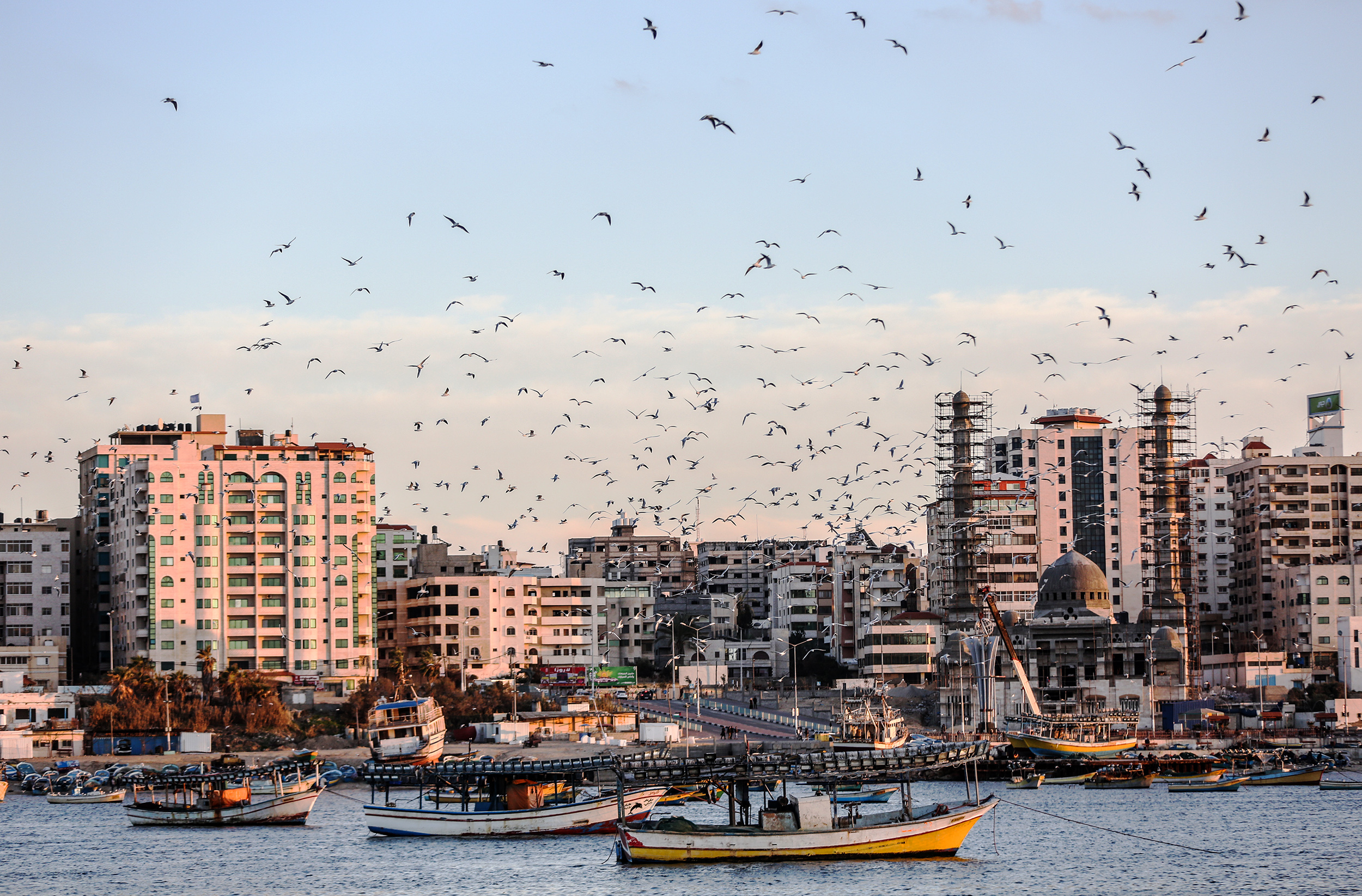The Gaza Strip

Gaza in many ways represents the crux of Israeli policy towards Palestinians, if a much starker manifestation of it: economic and social suffocation, fragmentation, and demographic engineering.
A coastal strip of land, bordering Israel and Egypt, that makes up part of the occupied Palestinian territory (oPt) today, the Gaza Strip is home to a population of approximately 2.1 million Palestinians, including 1.7 million refugees.(1)
The Gaza Strip is under military occupation by Israel. In 2005 Israel undertook what was termed “disengagement”, whereby around 8,500 settlers were removed, Israeli military forces were repositioned along the perimeter around the territory, and Israel implemented a system of “enclosure” around the Gaza Strip, which turned into the blockade in its present form after Hamas took control in 2006. This blockade was in fact an intensification of already-existing restrictions on the movement of people and goods which had been in place since the early 1990s. In 2003, Israeli sociologist Baruch Kimmerling described the Gaza Strip as “the world’s largest concentration camp ever”(2). One year later, Israel’s then-National Security Director Giora Eiland said that Gaza is a “huge concentration camp”(3). The blockade prevents the movement of Palestinians as well as essential goods into and out of the Gaza Strip, and has created crippling economic conditions and a state of de-development. The UN has called the closure and blockade of Gaza ‘collective punishment’, which is illegal under international law(4).
Israel controls access to the Gaza Strip by holding 6 of the 7 checkpoints through which entry can be gained to the territory. Through this grip, Israel prevents most movement of individuals into and out of Gaza and severely restricts the flow of goods. For example, between the end of Israel’s 2014 attack on the Gaza Strip in late August of that year and the end of July 2015, only 6.5% of the construction materials needed had been allowed in (5). Israel also maintains control over the airspace, territorial waters and population registry, and has also designated “no-go areas” inside the territory where those who enter can be shot.
In addition to these forms of “effective control” which have created a widespread consensus that the Gaza Strip is still occupied territory despite 2005’s “disengagement”, Israel also carries out periodic military assaults: five major assaults in 2008-09, 2012, 2014, 2018-19, 2021, and now 2023, and multiple smaller attacks as well. From 2018-19 the Israeli military responded violently to the Great March of Return, a non-violent campaign that was launched by the Gaza Strip’s civil society to protest conditions in the territory and call for the implementation of the right of Palestinian refugees to return to their ancestral homes. Israeli forces adopted a policy of using live fire by snipers against unarmed protestors, medics and journalists between March 2018 and December 2019, killing 214 Palestinians and injuring over 36,000.
Israel’s most violent and systematic military assault on the Gaza Strip began in October 2023. On 7th October, a Hamas-led operation to breach the fence with Israel and take key military sites within Israeli territory just outside of Gaza led to one of the most significant strategic defeats for the Israeli military in its history. According to Israeli officials quoted by UN OCHA some 1,400 Israelis were killed. A day later, Israel declared a “complete siege” on Gaza and began a massive military assault, razing densely populated urban areas to the ground, killing thousands of Palestinians, many of them children, and destroying essential civic infrastructure. As a result UN and other international law experts warned that the Palestinian people were at “grave risk of genocide”.
References
For more resources on Settlements, see:
- PCHR, Palestinian Centre for Human Rights
- Gisha, Legal Centre for Human Rights: Where’s the housing boom?
- Jadaliyya: Is Gaza still occupied and why does it matter?
- Jadaliyya: A separate piece? Gaza and the no-state solution
- UNRWA: The Gaza Strip
- UNSCO: Gaza 10 years later
- Sara Roy – Failing Peace: Gaza and the Palestinian-Israeli Conflict
- Sara Roy – The Gaza Strip: The Political Economy of De-Development
Footnotes
- https://www.unrwa.org/where-we-work/gaza-strip
- https://theintercept.com/2018/05/20/norman-finkelstein-gaza-iran-israel-jerusalem-embassy/
- https://wikileaks.org/plusd/cables/04TELAVIV1952_a.html
- https://www.ohchr.org/en/press-releases/2020/07/israels-collective-punishment-palestinians-illegal-and-affront-justice-un
- http://features.gisha.org/wheres-the-housing-boom/
Palestine 101
Learn the basics

